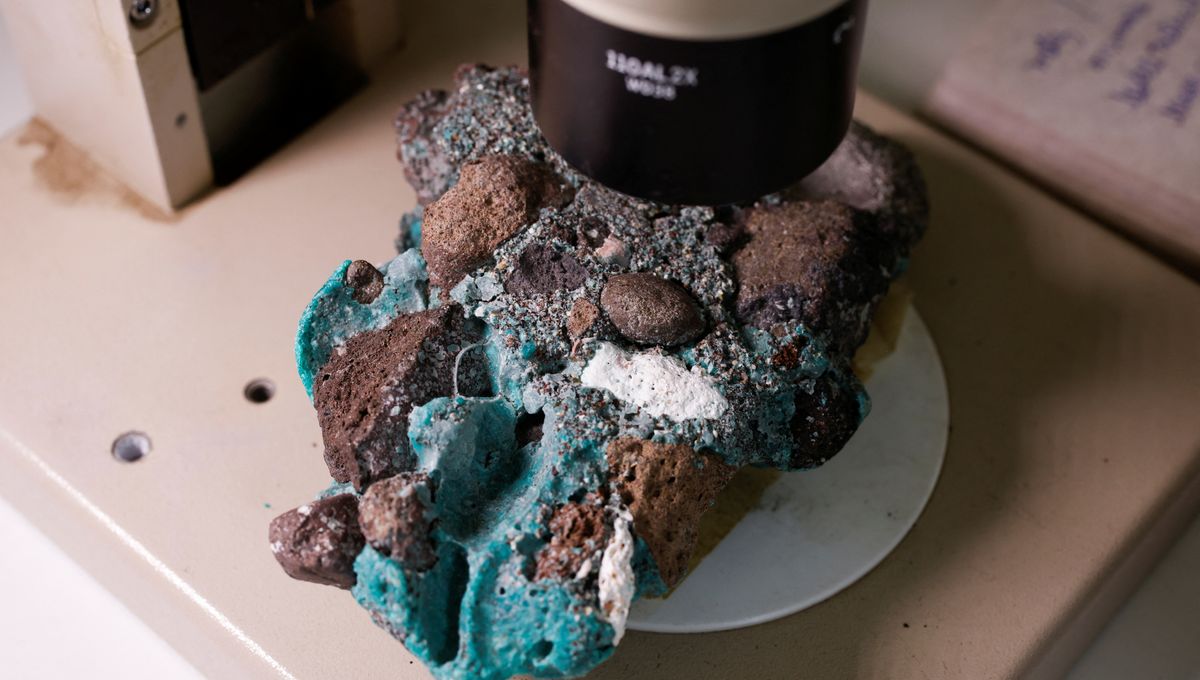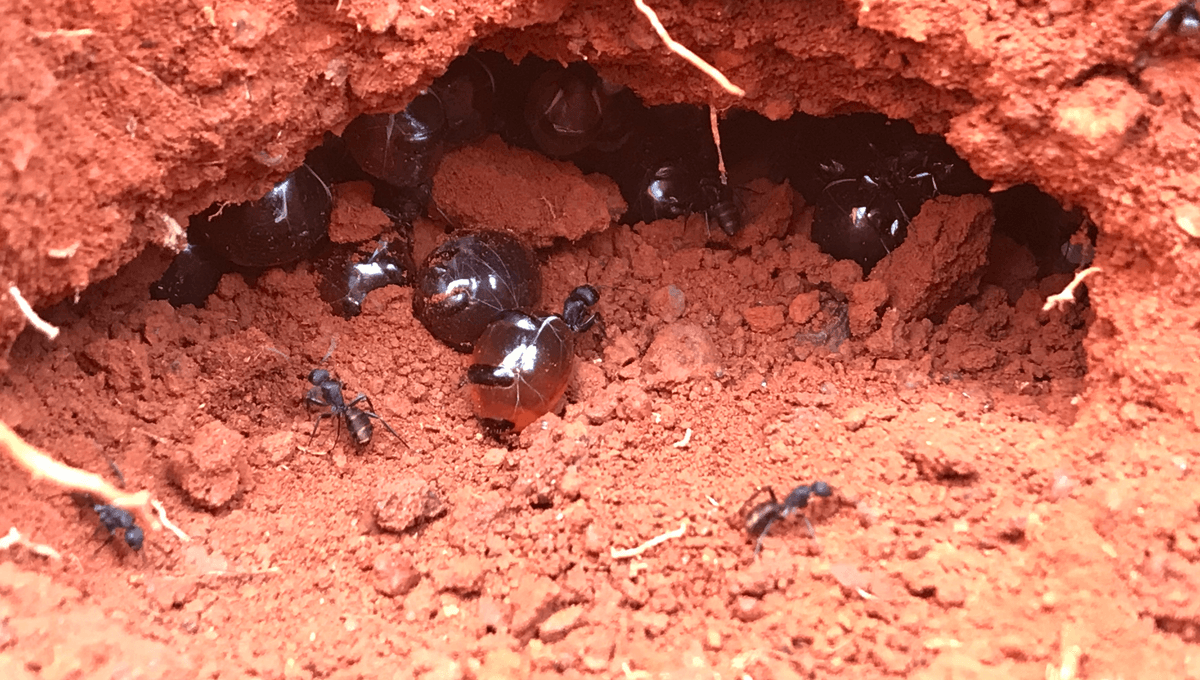Prepare to be amazed and horrified by the latest geological discovery: plastiglomerates. These rocks are a bizarre combination of sedimentary granules and other debris, fused together by melted plastic from volcanic activity.
Geologists from the Federal University of Parana stumbled upon this mind-boggling find on Trindade Island, a remote turtle refuge in the Atlantic Ocean, far away from any human settlement. The rocks, with their strange blue-ish green color, left the scientists puzzled. They conducted chemical tests on the samples and were shocked to find that the rocks were made up of both natural sediment and plastic, most likely from fishing nets.
“This is new and terrifying at the same time because pollution has reached geology,” said Fernanda Avelar Santos, a geologist at the Federal University of Parana.
Further investigation revealed that the pollution mainly comes from fishing nets, which are commonly found debris on Trindade Island’s beaches. These nets are carried by marine currents and accumulate on the beach. When the temperature rises, the plastic melts and becomes embedded with the natural material of the beach,” Santos explained.
This isn’t the first time plastiglomerates have been discovered. They were first documented in 2014 and have since been found in various locations around the world. However, the recent finding on Trindade Island is particularly alarming due to its remote location and the presence of rare wildlife. The island is a crucial nesting site for green sea turtles and is known to harbor humpback whale nurseries.
Trindade Island is uninhabited, except for a small research station controlled by the Brazilian navy.
Plastiglomerates serve as a grim reminder of the widespread problem of plastic pollution. A recent report revealed that there are now over 170 trillion pieces of plastic floating in the world’s oceans. This discovery highlights how human-made materials are leaving a lasting impact on Earth’s geology, even after we are gone.
“We talk so much about the Anthropocene, and this is it,” Santos concluded.








